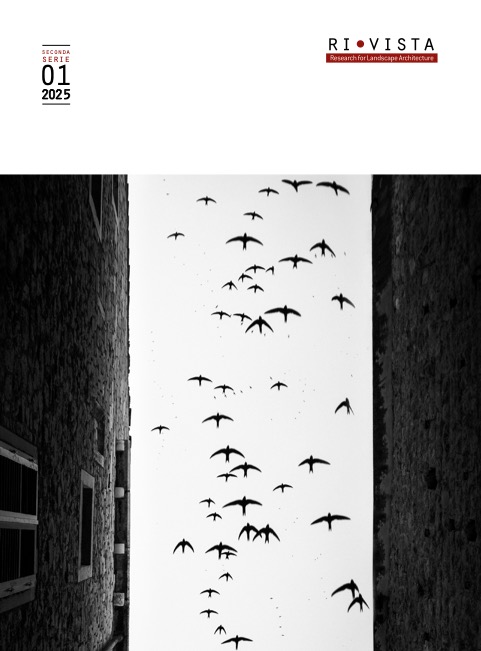Published 2025-10-28
Keywords
- Decommissioning,
- Re-inhabiting,
- Inventory,
- Public space
How to Cite
Copyright (c) 2025 Martina Pietropaoli

This work is licensed under a Creative Commons Attribution 4.0 International License.
Abstract
This article takes inspiration from an experimental approach to research and teaching: the inventory of open spaces at the Ex Mattatoio in Rome, a former slaughterhouse that has been gradually transforming into a Città delle Arti since 1975. Seen through the combined perspectives of photography and urban studies, this site becomes emblematic for examining processes of decommissioning within the multi-scalar condition of the contemporary city. Looking at the practice of this inventory provides a theoretical reflection on the effects that urban regeneration processes—often lengthy and conflictual—have on the notion of “openness” associated with space. Conceived both as a portrait of places and as a project, the inventory becomes a tool for capturing uncertainty and the traces of relationships embedded in the city. When recalled, these traces can turn “openness” into a space for rights and diversity. How, then, can we preserve those margins of redundancy, genericities, flexibility, and freedom that keep open spaces truly open?
References
- AUT – Archivio Urbano Testaccio http://aut.uniroma3.it
- Armiero M. 2021, L’era degli scarti. Cronache dal Wasteocene, la discarica globale, Einaudi, Torino. DOI: https://doi.org/10.1017/9781108920322
- Bianchetti C. 2020, Corpi tra spazio e progetto, Mimesis Edizioni, Milano-Udine.
- Caudo G. 2021, Patrimonio in transizione e progetto di città, in C. Cassatella (ed), Downscaling, rightsizing. Contrazione demografica e riorganizzazione spaziale, Planum Publisher e Società Italiana degli Urbanisti, Roma-Milano, pp. 39-46.
- Eco U. 2009, Vertigine della lista, Bombiani, Milano.
- Gigliotti G. 2025, La Città delle arti all’ombra del Campidoglio, «Il Giornale dell’Arte» n. 460, p. 14.
- Granata E. 2021, Placemaker. Gli inventori dei luoghi che abiteremo, Einaudi, Torino.
- Landry C. 2009, City Marking. L’arte di fare città, Codice edizioni, Torino.
- Perec G. 2009, Specie di spazi, Bollati Boringhieri, Torino.
- Pietropaoli M. e Caudo G. (eds) 2021, Riabitare il mondo, Quodlibet, Roma-Macerata.
- Pietropaoli M. 2024, Verso la Città delle Arti di Roma: la rigenerazione dell’Ex-Mattatoio di Testaccio, «Artribune» https://www.artribune.com/attualita/2024/05/citta-arti-roma-ex-mattatoio-testaccio/
- Roberts P. 2000, The Evolution, Definition and Purpose of Urban Regeneration, in P. Roberts e H. Sykes (a cura di), Urban Regeneration: A Handbook, SAGE Publications.
- Russo M. 2015, Multiscalarità. Dimensioni e spazi della contemporaneità, in «Archivio di Studi Urbani e Regionali», XLVVI, 113, pp. 5-22. DOI: https://doi.org/10.3280/ASUR2015-113001
- Russo M. 2018, Potenzialità dei luoghi e relazioni metaboliche, in Urbantracks n. 28, “Città che plasmano futuri collettivi”, pp. 9-14.
- Viganò P. 2000, La città elementare, Skira, Roma.
- Viganò P. 2019, Progettare la città, oggi, https://rienergia.staffettaonline.com/articolo/33320/Progettare+la+città,+oggi/Viganò
- Viganò P. 2023, Il giardino biopolitico. Spazi, vite e transizione, Donzelli Editore, Roma.





